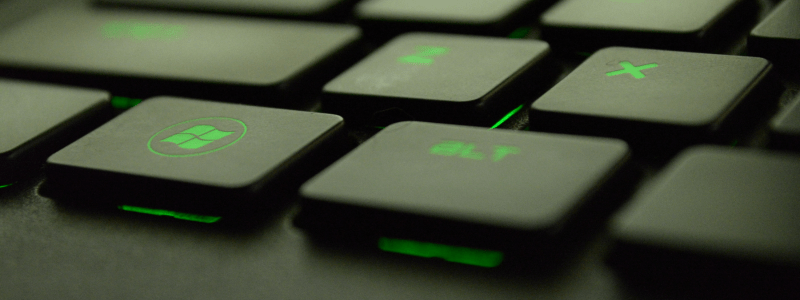
Ever find yourself pressing the Windows Key and nothing happens? The Windows Key can be a big help for productivity, giving quick access to the Start menu, shortcuts, and various system functions. When it stops working, it can feel like you’ve lost a limb in the computing world. But don’t worry—there are plenty of solutions to get it back in action. In this article, we’ll explore various fixes and tips to resolve the issue of the Windows Key not working.
Understanding the Problem
Signs that the Windows Key is Not Working
Before diving into fixes, let’s identify the problem. If pressing the Windows Key does nothing or triggers incorrect responses, you’re facing this issue. It might be inconsistent, where it works sometimes and not others or it could be completely unresponsive.
Potential Causes for the Issue
There are various reasons why the Windows Key might stop working. These include software conflicts, outdated drivers, system settings changes, physical keyboard damage, or even malware. Understanding these causes can help pinpoint the most effective solution.
Initial Troubleshooting Steps
Restart Your Computer
It sounds simple, but a quick restart can fix many minor glitches. This action can reset software and hardware states, potentially resolving the issue.
Check for Hardware Issues
Ensure your keyboard is properly connected. If you’re using a wireless keyboard, check the batteries or connection. Try plugging the keyboard into a different USB port or another computer to rule out a hardware problem.
Software-Related Solutions
Update Windows
Keeping your operating system updated is crucial. Updates often fix bugs that might be causing your Windows Key issue. Go to Settings > Update & Security > Windows Update and check for updates.
Check for Software Conflicts
Certain programs, especially those involving keyboard shortcuts or gaming, might interfere with the Windows Key. Check if the problem persists in Safe Mode, which can help identify if third-party software is the culprit.
Disable Gaming Mode
Some keyboards and gaming software have a gaming mode that disables the Windows Key to prevent accidental presses during gameplay. Make sure this mode is turned off.
Scan for Malware and Viruses
Malware can hijack or disable certain keys. Run a full system scan using Windows Defender or your preferred antivirus software to rule out this possibility.
Keyboard Driver Issues
Update Keyboard Drivers
Outdated or corrupt drivers can cause key malfunctions. Update your keyboard drivers through Device Manager. Right-click on the Start menu, select Device Manager, find your keyboard, and choose to update the driver.
Reinstall Keyboard Drivers
If updating doesn’t work, try reinstalling the drivers. Uninstall the current driver from Device Manager, then restart your computer. Windows should automatically reinstall the correct drivers.
Rollback Keyboard Drivers
Sometimes new driver updates might cause issues. If your Windows Key stopped working after a recent update, rolling back to a previous driver version might help. This option is available in the Device Manager under the keyboard properties.
Registry Edits
Editing the Registry to Fix the Windows Key
The Windows Registry holds various settings that control the operating system’s behavior. Sometimes, tweaking these settings can resolve the Windows Key issue. Open the Registry Editor (type “regedit” in the Start menu) and navigate to HKEY_LOCAL_MACHINE\SYSTEM\CurrentControlSet\Control\Keyboard Layout.
Backing Up the Registry Before Making Changes
Before making any changes, back up your registry. In the Registry Editor, click File > Export, and save a backup. This ensures you can restore the original settings if something goes wrong.
Group Policy Editor Fixes
Using Group Policy Editor to Enable the Windows Key
The Group Policy Editor can disable or enable specific keys. To check if the Windows Key is disabled, open the Group Policy Editor (type “gpedit.msc” in the Start menu), navigate to User Configuration > Administrative Templates > Windows Components > File Explorer, and find the “Turn off Windows Key hotkeys” setting.
Steps to Navigate and Edit Group Policy
Double-click on “Turn off Windows Key hotkeys” and set it to Disabled or Not Configured. Apply the changes and restart your computer to see if this resolves the issue.
Third-Party Software Interference
Identifying Problematic Software
Sometimes third-party software, especially those modifying keyboard functions or adding shortcuts, can interfere with the Windows Key. Uninstall recent software or update it to the latest version to see if the problem is resolved.
Uninstalling or Updating Third-Party Software
Go to Control Panel > Programs > Programs and Features, find the software that might be causing the issue, and choose to uninstall or update it.
Keyboard Settings Adjustment
Check Keyboard Settings in Windows
Ensure your keyboard settings haven’t been accidentally changed. Go to Settings > Devices > Typing and review the options under “Advanced keyboard settings.”
Customize Your Keyboard Layout
If you use custom keyboard layouts, make sure they are correctly configured. Incorrect settings can disable certain keys.
Physical Keyboard Check
Inspect for Physical Damage
Physical damage to your keyboard can cause key malfunctions. Check for any visible damage or wear and tear.
Cleaning the Keyboard
Dirt and debris can get under the keys, causing them to stop working. Use compressed air or a soft brush to clean the keyboard thoroughly.
Alternative Solutions
Using an External Keyboard
If your built-in keyboard has issues, using an external keyboard can be a temporary or permanent solution.
On-Screen Keyboard as a Temporary Fix
Windows offers an on-screen keyboard that can be used as a temporary fix. Go to Settings > Ease of Access > Keyboard and turn on the on-screen keyboard.
Advanced Troubleshooting

System File Checker (SFC) Scan
The SFC scan can fix corrupted system files that might be causing the issue. Open Command Prompt as an administrator and type sfc /scannow, then press Enter.
DISM Tool for Fixing Windows Corruption
The Deployment Imaging Service and Management Tool (DISM) can repair Windows corruption. In Command Prompt, type DISM /Online /Cleanup-Image /RestoreHealth and press Enter.
Reinstalling Windows
When to Consider Reinstalling Windows
If all else fails, a fresh Windows installation can resolve persistent issues. This should be a last resort due to the time and effort involved.
Steps to Safely Reinstall Windows
Back up your data, create a Windows installation media, and follow the on-screen instructions to reinstall Windows. Ensure you have your product key and installation files ready.
Preventive Measures
Regular Updates and Maintenance
Keep your system and drivers updated regularly to prevent such issues. Regular maintenance can help avoid unexpected problems.
Best Practices to Avoid Future Issues
Avoid installing suspicious software, keep your system clean from malware, and handle your hardware carefully to prevent physical damage.
Conclusion
Getting your Windows Key back to work involves a mix of troubleshooting steps, from simple restarts to more advanced fixes like registry edits and driver updates. Try each step methodically, and you’ll likely find the solution that works for you.
FAQs
1. Why is my Windows Key not working?
The Windows Key might not work due to software conflicts, outdated drivers, malware, or physical damage to the keyboard.
2. Can I fix the Windows Key without reinstalling Windows?
Yes, most issues can be resolved through updates, driver fixes, registry edits, and other troubleshooting steps without needing to reinstall Windows.
3. What if none of the solutions work?
If none of the solutions work, consider using an external keyboard or the on-screen keyboard as a temporary fix. Reinstalling Windows might be a last resort.
4. Is using an external keyboard a permanent fix?
An external keyboard can be a permanent solution if the built-in keyboard is damaged or malfunctioning beyond repair.
5. How can I prevent my Windows Key from malfunctioning in the future?
Regularly update your system, avoid installing suspicious software, run antivirus scans, and handle your keyboard with care to prevent future issues.
For more troubleshooting tips on resolving common errors, check out our detailed guide on Troubleshooting Error 0X800701B1: Solutions and Fixes.
